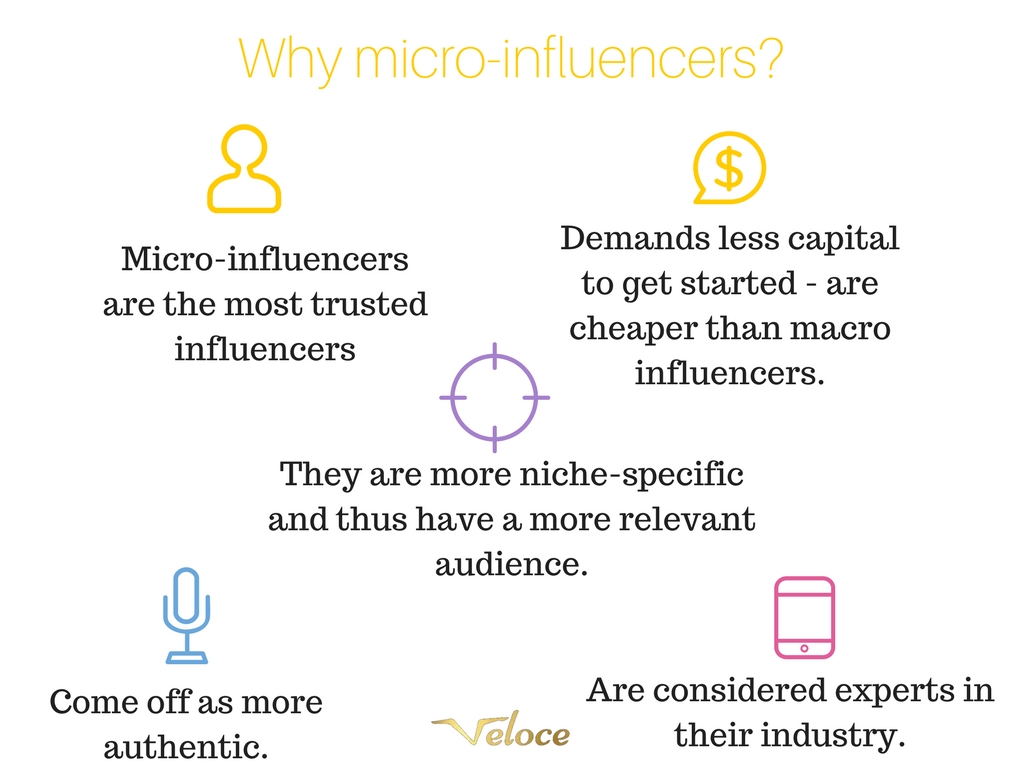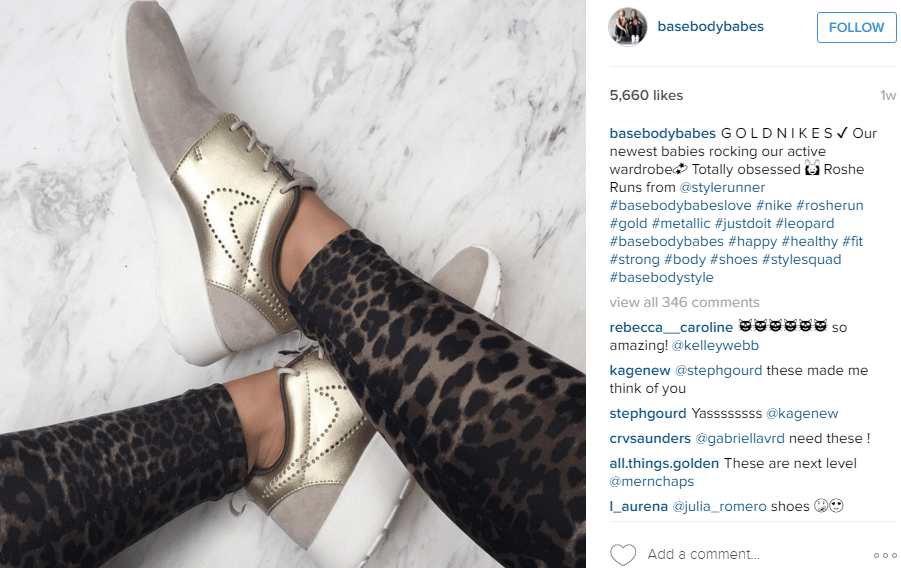There are things you need to know about micro-influencers. Do you know them?
If you’re in any way familiar with influencer marketing, chances are, you’ve heard the term micro-influencer as well.
Not only has influencer marketing skyrocketed over the years, but so has the popularity of micro-influencers.
For most marketers, influencer marketing is something new and unheard of, and micro-influencer marketing is even more unfamiliar.
But don’t worry, though.
In this article, I am sharing everything you need to know about micro-influencers. Whether you are planning to launch your very own micro-influencer marketing campaign, or just trying to understand the market better.
What are micro-influencers?
Defining something is always tricky, and defining micro-influencers is even trickier.
Generally, a “regular” influencer is an individual with a large following and a true influence over peoples’ decisions and lives, and a micro-influencer is exactly that – only in a smaller scale.
What has enabled influencer marketing to grow so much in the last couple of years, and has become an important part of many brands’ marketing strategies is social media. Social media has given everyone who takes the opportunity a voice to express their opinions, ideas, share their lives, and much more.
Back in the days, the only people you looked up to were celebrities, and they were the only influencers, but that’s not the case anymore.
Now, a lot of people are turning to social media for inspiration and advice, and they go to influencers and micro-influencers to be served with just that.
But to answer the question, the only thing that differs an influencer from a micro-influencer is their follower count. The problem is that it can get a little misleading, as a micro-influencer can have more influence and thus be more effective in marketing than a regular influencer. Moreover, it also emphasizes the importance of follower count, even though there are so many other factors you want to consider when running an influencer marketing campaign in order to make it successful.
In the”standard” definition, influencers have over 100K followers on social media, and micro-influencers have less than 100K followers.
But I have said it before and I will say it again, follower count should only be used as an indicator and not much more. It is extremely difficult to draw any clear-cut conclusions only from the follower count, and it is also easy to stare yourself blind at the follower count, whilst there are other, more important metrics that you can and should look at.
Why Should You Use Micro-Influencers?
The most simple answer is because micro-influencers have the potential of driving a better ROI and at a lower cost.
There are three things that make micro-influencers more effective in marketing, at least if you compare the cost to results, and those things are that generally, micro-influencers have a much more engaged audience, and secondly, micro-influencers are known to be more authentic and trustworthy. Lastly, micro-influencers are, apart from being known to have a more engaged audience, they are also known to have a more specific audience.

In other words, if the mico-influencer is operating within the beauty niche, the vast majority of their audience consists of people who are passionate about beauty.
Those are the characteristics that normally separate micro-influencers from influencers.
Remember, though, that this is only generally speaking, and doesn’t go for every individual just because they have 20K followers.
In fact, before you partner with any influencers, you have to carefully look at them, and see if they are suitable for your brand and your marketing campaign
Micro-influencers are more affordable
This is really where micro-influencers set themselves apart from regular influencers.
The thing is if you’re going to partner with influencers, and have them promote your brand, chances are you’re going to have to pay them in return.
Influencers base their rates on their follower count, not by their actual influence (which is what really matters in an influencer campaign), and this means that as influencers grow their following, and surpass the micro-influencer stage, their prices get higher and higher, and having them promote your brand and products can be incredibly expensive.

And what’s even more, is that studies have found that as follower count increases on social media, the engagement rate decreases. And as a brand, you’re ultimately after the engagement, not followers. Because, if the followers don’t do anything, aren’t interested, or maybe don’t even see the post, the campaign won’t be very successful, will it?
This is what makes micro-influencers more affordable if you compare the results they can generate and the cost of having them promote you.
Micro-influencers have a low follower count, and low cost, but at the same time, their followers are highly engaged and targeted, whereas regular influencers have a large following, but are expensive to partner with, and have a much less engaged audience than the micro-influencer.
Do you see where I am going?
What truly matters is how much you can impact people with your marketing campaign, and if the followers aren’t targeted nor relevant, you won’t impact people a lot with your campaign, even if the influencer has a large following. And the fact that you paid a lot to have them promote you didn’t help, either.
The good news is that sometimes, micro-influencers satisfy with just product samples in exchange for promotion. With regular influencers, seeing that is quite uncommon.
The bottom line is that you’d think that influencers base their cost and rates on the influence they have, but instead, they base their rates on their follower count, and that isn’t what truly matters in a marketing campaign. It is the true influence, and the influence is known to decrease, at least if you compare engagement rates.
So percentage-wise, you’ll have to pay more per engagement for a regular influence compared to a micro-influencer.
But remember that this is only generally speaking. You can generate a much higher ROI with larger influencers compared to micro-influencers and vice versa. In other words, the success of the campaign depends on a number of different factors, not just followers.

Micro-influencers are more trusted
You’ve probably seen celebrities that promote various brands and you just cringe because the campaign is so awkward, and you think in your head that the celebrity doesn’t align with the brand.
This is not the case for micro-influencers, but it might be for regular influencers.
Micro-influencers have built an engaged audience of individuals who look up to the influencer and go to them for advice.
Therefore, the influencer sees it as their duty to lead their audience and give them advice, and the audience trusts the influencer to lead them.
What does this mean?
It means that if you approach micro-influencers who don’t resonate with your brand, chances are, they’ll say no if you ask them for a partnership because they know that if they say yes, they’ll come off as inauthentic and therefore lose their audience’s trust.
And remember, as a micro-influencer, the trust is the most important asset, since it is with the trust they can impact their audience.
Influencers, and especially celebrity influencers, on the other hand, are often being called sell-outs, as they say, yes to a lot of the business proposals that come at them, and therefore, they become less trustworthy, and can therefore not generate as great results in the future.
As a brand. you want your influencers to be trusted because if an influencer recommends something, you want their audience to think “if Alex recommends this, it must be super good because I trust him”.
Another reason why micro-influencers are so trusted is that generally speaking, they engage and interact with their audience on a regular basis. For example, have you ever seen celebrities engaged with their audience, thank them for their support, and interact with them?
Not me either, and it is because of two potential reasons: they don’t have the time to interact with all of their several hundred comments, or, they feel like they’re sitting on a high horse where they don’t have to.
But what not engaging with your audience does is pushing them away from you and making them trust you less.
And the good news is that micro-influencers pay attention to this, and therefore emphasize interaction and relationship.
Micro-influencers can often see engaging with their audience, chatting, and increasing their audience’s trust in them, which is why, when they promote something, they can generate much better results, because people actually listen to what they have to say.
Micro-influencers are specific
Micro-influencers are considered to be experts in their niche, and therefore, they attract people who are interested in that particular niche.
As a brand, you have absolutely no interest in reaching people who aren’t within your target audience, instead, you want to reach people who are relevant to your brand and actually interested in your nice. For instance, we often see Kim Kardashian promote makeup on social media, but how many percent of her followers do you think are genuinely interested in makeup? Well, first off, a large part of her followers are male, which removes them from the equation, a portion of her followers might have zero interest in makeup, and another portion might only be using a particular brand… And so on.

The bottom line is that you should take follower count with a great pinch of salt because oftentimes, far from everyone are actually relevant to your brand.
But the good news is that micro-influencers have a more relevant following which mainly consists of people who are genuinely interested in what the micro-influencer is sharing.
Therefore, if you find a micro-influencer with an engaged audience in your niche, chances are, that the audience will be interested in your brand.
Available to more brands
Another thing that makes micro-influencers popular is that they open up the door for more brands to use influence marketing, not just the ones with the giant marketing budgets.
For instance, Selena Gomez is reported to charge $550,000 per promotional post on Instagram, and obviously, that’s a sum which most brands can’t afford to pay.
But when it comes to micro-influencers, where you can have them promote your brand for maybe just a product sample, it opens up the door for virtually every brand to leverage the social media marketing dorm.
Micro-influencers are different from regular influencers
The vast majority of influencers will only post the number of promotional posts you pay them to, and then never talk about your brand again.
And then, the next week, they might be paid by your competitor to promote them, and they’ll say that “this is the best brand in the market”, just like they did when they promoted you. In other words, there’s great inauthenticity which comes off indirectly from this type of marketing that the audience sees.
Micro-influencers, on the other hand, don’t rely on promotions to make their living, and therefore, they’ll be more selective with the brands they partner with, and the things they say. Micro-influencers have built a loyal audience by being authentic in the first place, and therefore, they’ll continue to be so, only promoting brands they truly believe in and say their honest opinions.
Did you know all of these things about micro-influencers?
Let us know in the comment section below


